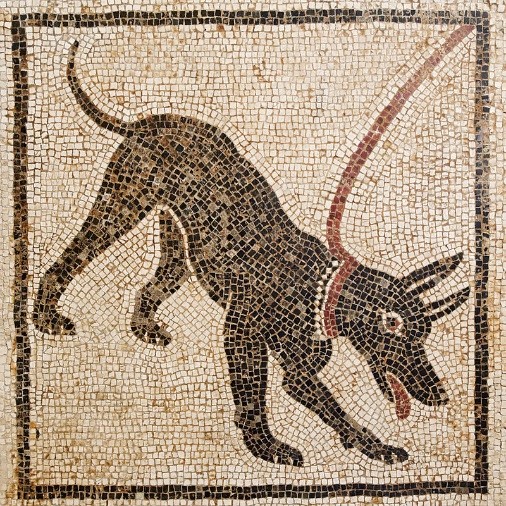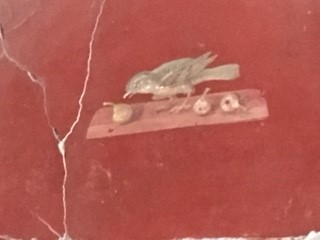8 June 2018

I was lucky enough to be in Sorrento last week. A beautiful part of Italy, but ferociously hot. Being, by descent, from the West coast of Ireland I am not genetically predisposed to cope with intense heat. Overcast with possible light drizzle is my favoured climate. As we plodded slowly through the crowds, irritable and desperately seeking shade, we noticed a sign advertising a Francis Bacon exhibition. We were only 100 metres from the exhibition. The entry fee was only 5 Euros. It was being hosted at the beautiful, 1930s built, Villa Fiorentino. And, wonderfully, it was air conditioned. Cool and shady. .jpg) Serendipity. The timing was fortuitous, the exhibition was fascinating. It featured the Surrealist works that Bacon had produced in the 1930s, such as the above self-portrait, and a variety of photomontages constructed from old newspaper, featuring De Gaulle and Kennedy. Rather than his famous portraits, the exhibition highlighted his first attempts to develop a style and the way in which much of his work was commodified and sold, often against his wishes, by friends and associates. Betrayal and greed were as relevant as style or genre. Art stimulates curiosity and a desire to learn more; Bacon’s art is disturbing, his life complicated.
Serendipity. The timing was fortuitous, the exhibition was fascinating. It featured the Surrealist works that Bacon had produced in the 1930s, such as the above self-portrait, and a variety of photomontages constructed from old newspaper, featuring De Gaulle and Kennedy. Rather than his famous portraits, the exhibition highlighted his first attempts to develop a style and the way in which much of his work was commodified and sold, often against his wishes, by friends and associates. Betrayal and greed were as relevant as style or genre. Art stimulates curiosity and a desire to learn more; Bacon’s art is disturbing, his life complicated.
The murals at Pompeii and Herculaneum also suggest the variety of ways in which art was important, but they say much more about power, wealth, status and religious belief. The impulse to be creative has always been integral to the human condition, but the role of art has always been more complicated.
.jpg) Many feel that the role of art within education is being either marginalised or completely neglected. That it is viewed as being second class, or worthless. O 8th May a number of high profile artists, including Grayson Perry, Anish Kapoor and Rachel Whiteread wrote to the Guardian stating that:
Many feel that the role of art within education is being either marginalised or completely neglected. That it is viewed as being second class, or worthless. O 8th May a number of high profile artists, including Grayson Perry, Anish Kapoor and Rachel Whiteread wrote to the Guardian stating that:
There is compelling evidence that the study of creative subjects is in decline in state schools and that entries to arts and creative subjects have fallen to their lowest level in a decade. Young people are being deprived of opportunities for personal development in the fields of self-expression, sociability, imagination and creativity…. If we care about social mobility, wellbeing and economic growth – and if we want our creative industries to continue to flourish – we need to rebalance our education system so that the arts are valued just as much as other subjects. Every child should have equal access to the benefits that the arts and culture bring, not just a privileged few.
Variants of this letter have been drafted since Michael Gove’s educational reforms and there is clearly a perception that creative subjects or viewed as being less important than those featured in the Ebacc. (Not actually a qualification at all, but a school curriculum measure). With continuing financial pressures, many schools have been forced to make difficult curriculum decisions that may well have adversely affected art, music and other ‘creative’ subjects. (All subjects are creative, just in different ways).
being less important than those featured in the Ebacc. (Not actually a qualification at all, but a school curriculum measure). With continuing financial pressures, many schools have been forced to make difficult curriculum decisions that may well have adversely affected art, music and other ‘creative’ subjects. (All subjects are creative, just in different ways).
In late May we made two excellent appointments in art and design and technology. We will continue to support creative subjects, as they perform a vital function within the development of young people and offer ways in which students can broaden their education and life experiences. If education is meant to stimulate and challenge, then art has an obvious role to play within schools.
Mr O’Sullivan
